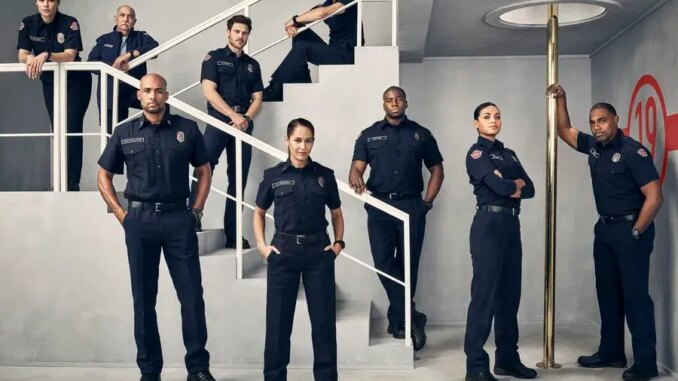
When the Sirens Meet the Scalpels: A Celebration of Connection in the Grey's Anatomy/Station 19 Crossover
For fans of Shonda Rhimes' Seattle universe, the interconnected worlds of Grey's Anatomy and Station 19 have long been a source of both anticipation and frustration. The shared cityscape, the occasional glimpses of familiar faces, and the promise of interwoven storylines have always dangled tantalizingly, leaving viewers yearning for more than just passing acknowledgements. So, when a truly significant crossover event finally materializes, it’s not just another episode; it’s a celebration of connection, a validation of invested emotion, and a chance to witness the full potential of this carefully crafted fictional reality.
The allure of these crossovers lies in the fundamental similarities and stark contrasts between the two professions. Both firefighters and surgeons operate under immense pressure, making split-second decisions that can mean the difference between life and death. They are both trained to be clinical and objective, yet constantly grapple with the emotional weight of their responsibilities. The doctors of Grey Sloan Memorial Hospital navigate complex ethical dilemmas within the sterile walls of an operating room, while the firefighters of Station 19 face unpredictable dangers in the chaotic, often brutal, world outside.
This dichotomy creates a compelling dynamic. The sterile environment of Grey Sloan, with its precise instruments and meticulously planned procedures, offers a stark contrast to the unpredictable and visceral nature of a fire scene. The doctors, steeped in medical jargon and intricate diagnoses, often appear detached and analytical. The firefighters, on the other hand, are characterized by their raw bravery, their unwavering camaraderie, and their capacity for immediate, decisive action. When these two worlds collide, the audience is presented with a multifaceted perspective on life, loss, and the enduring power of human connection.
A truly impactful crossover event, like the one so anticipated by the fandom, allows for a deeper exploration of these themes. It’s not just about a patient being transferred from a fire to the hospital. It's about witnessing how these two groups of professionals, despite their differing experiences, can come together to achieve a common goal: saving a life. It’s about seeing Maya Bishop, the fiercely driven captain of Station 19, collaborating with Meredith Grey, the legendary surgeon, to find a solution for a seemingly impossible situation. It's about the quiet understanding that develops between Andy Herrera and Miranda Bailey, two strong women navigating leadership roles in traditionally male-dominated fields.
Beyond the professional collaborations, these crossovers offer glimpses into the personal lives of the characters, blurring the lines between work and personal relationships. A medical emergency at Station 19 can expose vulnerabilities and anxieties that would otherwise remain hidden. A fire impacting Grey Sloan can reveal the quiet heroism of the doctors who dedicate their lives to healing. This intermingling of personal and professional lives adds layers of complexity and emotional resonance to the narrative, making the characters feel more relatable and the stakes feel even higher.
For the fans, these crossovers are more than just entertainment; they are a form of validation. They represent a recognition of the hours spent invested in these characters, their triumphs and tribulations. They are a tangible reward for the loyalty and dedication shown to these shows. The anticipation leading up to the event is often palpable, with online forums buzzing with theories, predictions, and shared excitement. And when the episode finally airs, it becomes a shared experience, a collective outpouring of emotion as fans witness their favorite characters navigate new challenges and strengthen existing bonds.
Ultimately, the celebration surrounding a long-awaited Grey's Anatomy/Station 19 crossover is a testament to the power of storytelling. It’s a recognition of the ability of these shows to create compelling characters, explore complex themes, and foster a sense of community amongst its viewers. It’s a reminder that even in the face of trauma and loss, hope and connection can endure, uniting these two worlds in a shared commitment to saving lives, one surgery, one fire, one heartbeat at a time. The sirens and the scalpels, working in harmony, create a symphony of heroism that resonates long after the credits roll.
